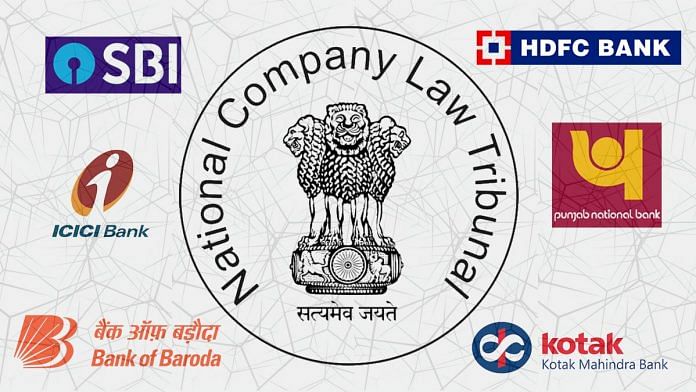The Insolvency and Bankruptcy Code (Amendment) Bill has been listed for introduction in the Monsoon session of Parliament. The IBC is one of India’s success stories. Since 2016, the IBC has managed to deal with insolvencies of 2,089 firms either through resolution or liquidation.
However, judicial discretion and delays may lead the IBC to become less effective than what was envisaged. While the Bill is a chance to breathe life into a potentially moribund legislation, the fundamental problem can only be solved through judicial reform, led by the judiciary.
IBC recognised time value of money
IBC was not the first attempt at dealing with insolvency of firms. However, it was different from previous efforts in that it recognised the damage from delays. If a firm has defaulted, then value can only be salvaged if it is taken into the insolvency process quickly. With each passing day, the amount creditors can recover becomes smaller, and capital and labour remain locked in.
The IBC recognised the time value of money and addressed it through two ways. First, it put in place strict timelines related to when a petition needs to be admitted, when a resolution plan needs to be approved, and at what point should the decision to liquidate the firm be made. Second, it reduced the scope for judicial discretion. This was done so that time would not get wasted in litigation, and courts would not get involved in commercial decisions. It was not for the courts to judge whether an outcome was valid, or fair, or optimal, as long as it was accepted by the committee of creditors. The court’s mandate was only to ensure that the correct procedure was followed.
Also read: Why bankruptcy logjams make India no country for dying firms
The problem of judicial delays and discretion
According to the IBBI quarterly newsletter of January-March 2022, the average time taken from the start of the proceedings to approval of resolution plans by the judiciary is 408 days. This is a far cry from the 180 and 270-day timeline set by the law. How did we end up here?
Judicial delays are endemic to the justice system in India, and the IBC is not immune to the shortcomings of the justice system despite being one of the key reform initiatives of the government. The capacity at the National Company Law Tribunal (NCLT) turned out to be no exception with 34 vacancies on a sanctioned strength of 63 members as of September 2021. Even though the IBC was suspended in the pandemic, the NCLT was disposing of only half the cases relative to the pre-pandemic period.
The deeper problem is that of judicial discretion. On various occasions, the Supreme Court held that timelines prescribed by the legislation were only directory and not mandatory in nature, and provided for extension of the processes. The latest judgment has now reopened the question of whether an insolvency application should even be admitted — even if there is debt and existence of default. In another case, the NCLT exercised discretion at the stage of admission of insolvency cases, in contravention to the IBC. This was upheld by the NCLAT (appellate tribunal).
Courts have also allowed new applicants to put in resolution plans or older applicants to revise their plans after the due date. They have passed orders that dilute the rights of secured creditors. This has undermined the procedural sanctity of the process, and added to the delays. These are just a few examples of judgments that have opened the floodgates to exactly what the drafters of the IBC wanted to prevent.
Also read: What critics of Insolvency and Bankruptcy Code get wrong about the recovery model
What needs to change?
The administrative problems of vacancies and workflow are easier to resolve. Numerous articles and reports have discussed reforms that will separate court administration from judicial decision making. India has experience with process engineering in other sectors that can be deployed at courts to solve for assignment of cases, and anticipate future case-loads. Investments can be made in improving the physical infrastructure, as well as providing resources in the form of researchers and training programmes. It is unclear what the roadblocks for these reforms are, but one can hope that they will get addressed in the near future.
The Report of the Insolvency Law Committee, 2022 has made suggestions to improve timely resolution of the insolvency process. These include greater reliance on the information utility for establishing default, as well as curbing judicial interventions on issues such as acceptance of unsolicited resolution plans, or revision of resolution plans, and strict adherence to timelines for approval or rejection of resolution plans. The question to ask is if the recommendations of the Law Committee, even if they made their way to the amended Bill, will be upheld any more than the original legislation.
The judiciary perhaps finds it appropriate to intervene if it believes such intervention is in the interest of natural justice. Court judgments often end up going against the letter and spirit of the legislation. To be fair, the written law will always be incomplete, and there is a case to be made for judicial discretion. But there needs to be more engagement on the rationale and substantive content of such interventions, the incentives they lay out for various stakeholders, and the downstream effects on markets and the economy. The attempts by the legislature to find solutions to problems of the Indian judiciary are unlikely to succeed. Only the judiciary can solve this. However, it has to be first convinced that there may be a problem.
The author is an associate professor at the National Institute of Public Finance and Policy (NIPFP). She tweets @resanering. Views are personal.
(Edited by Prashant)



